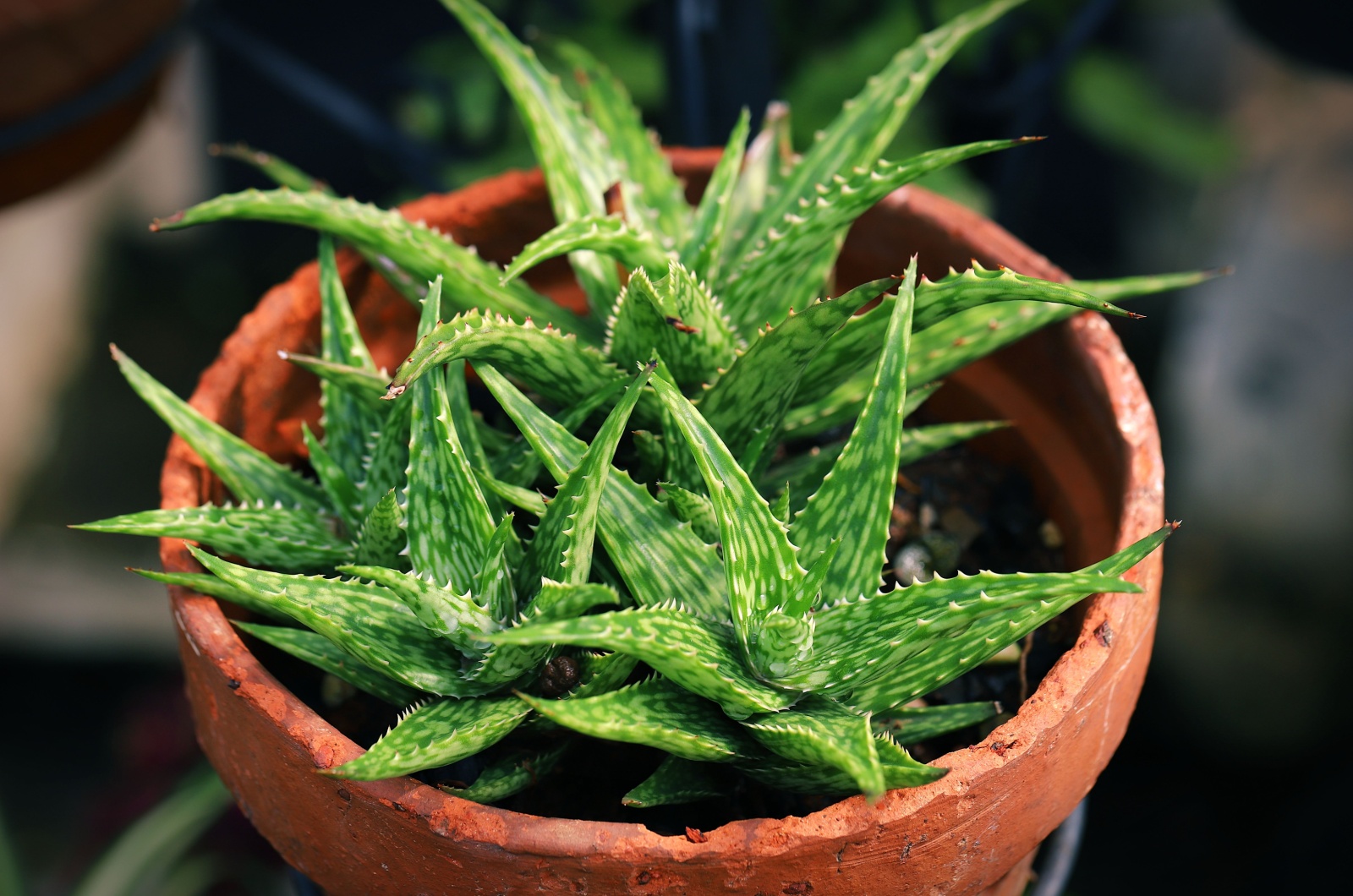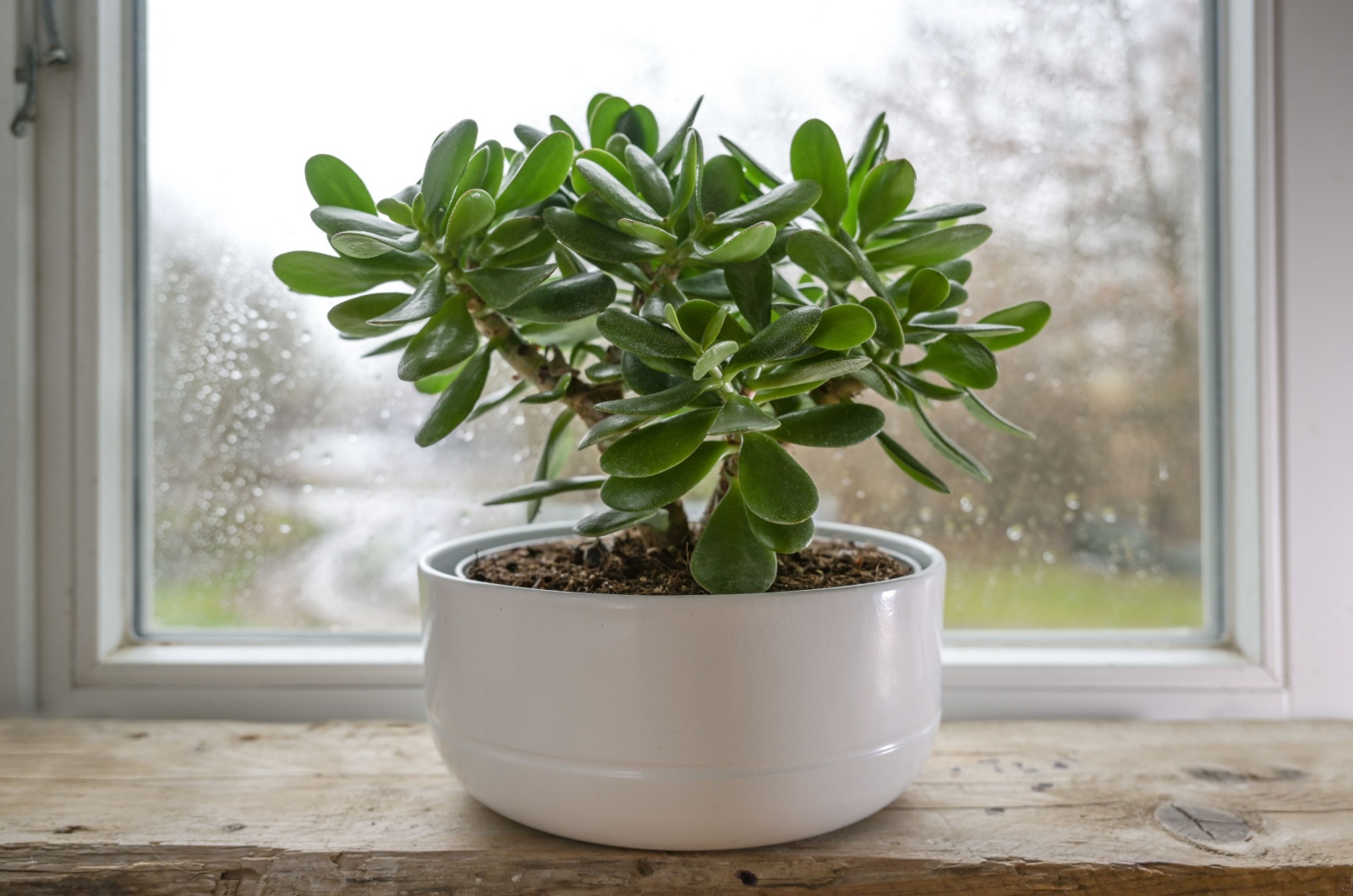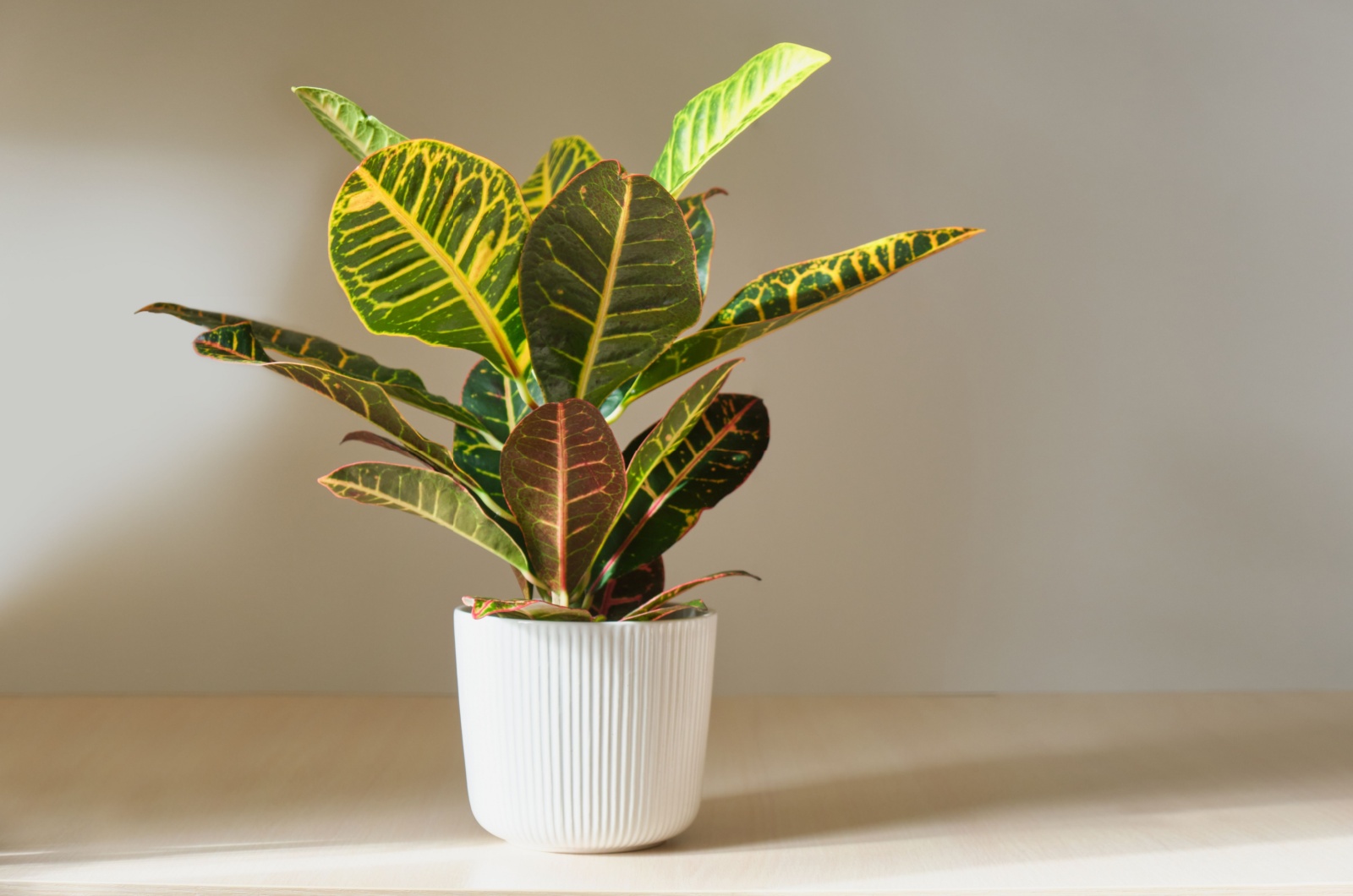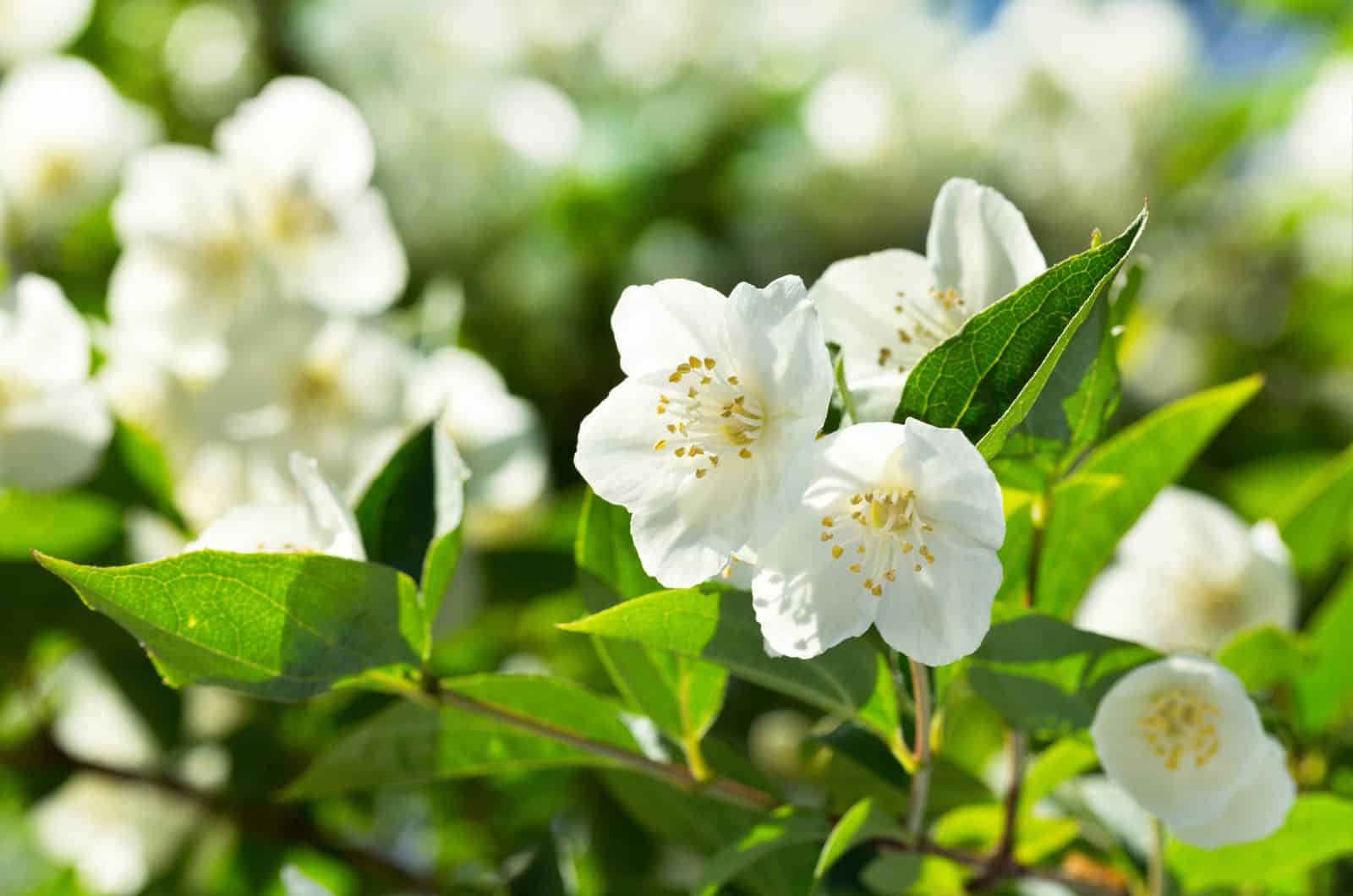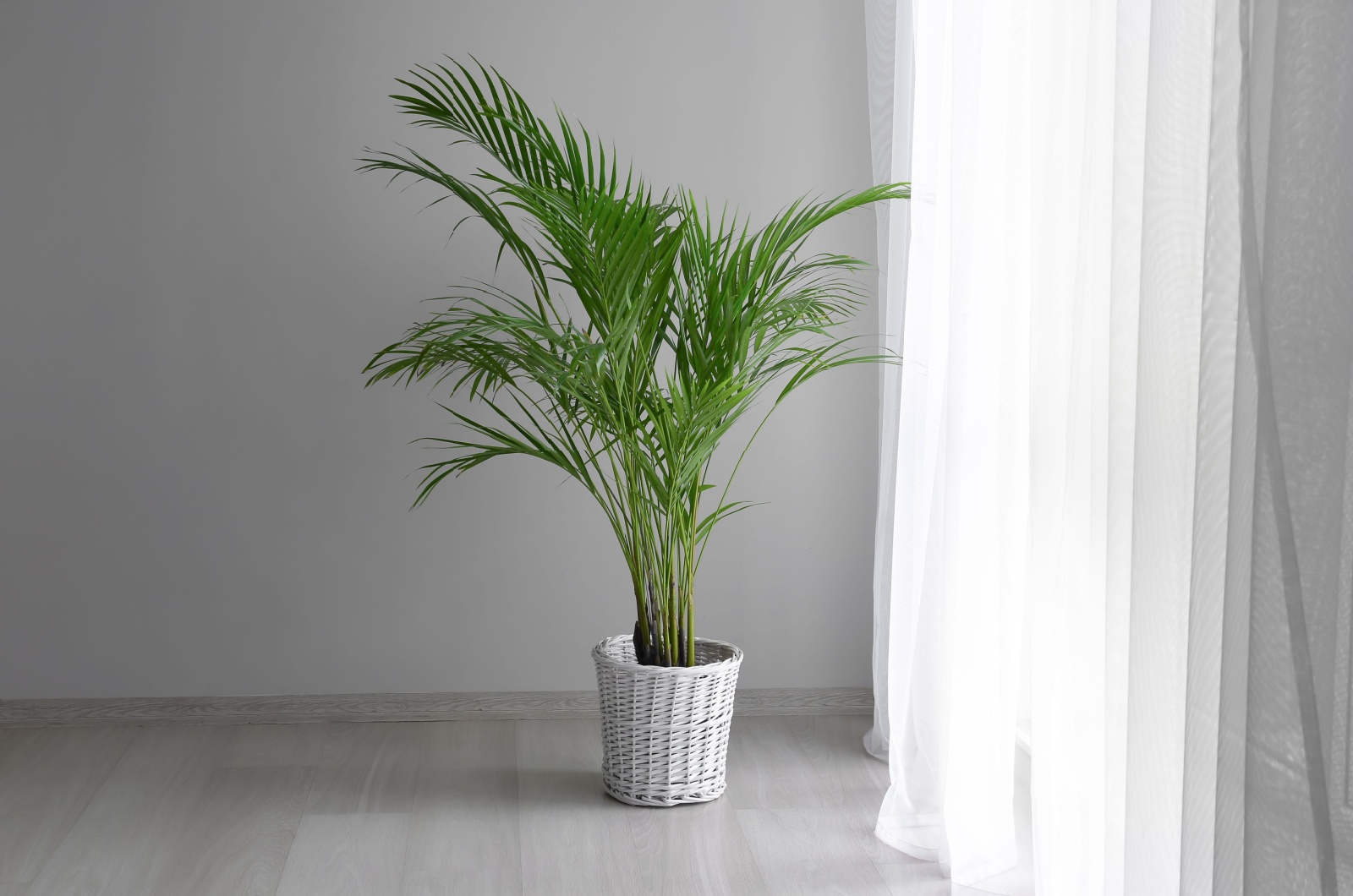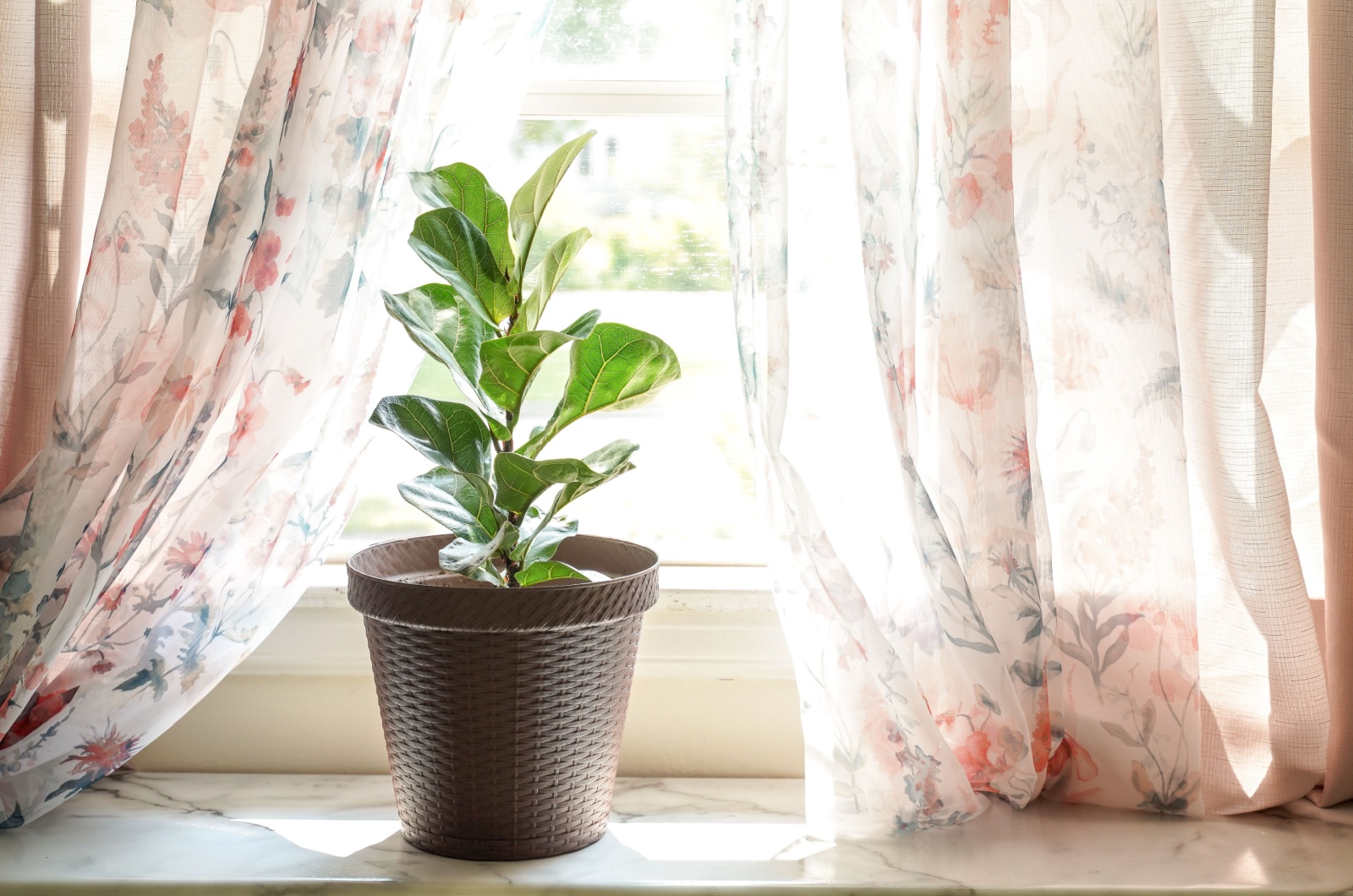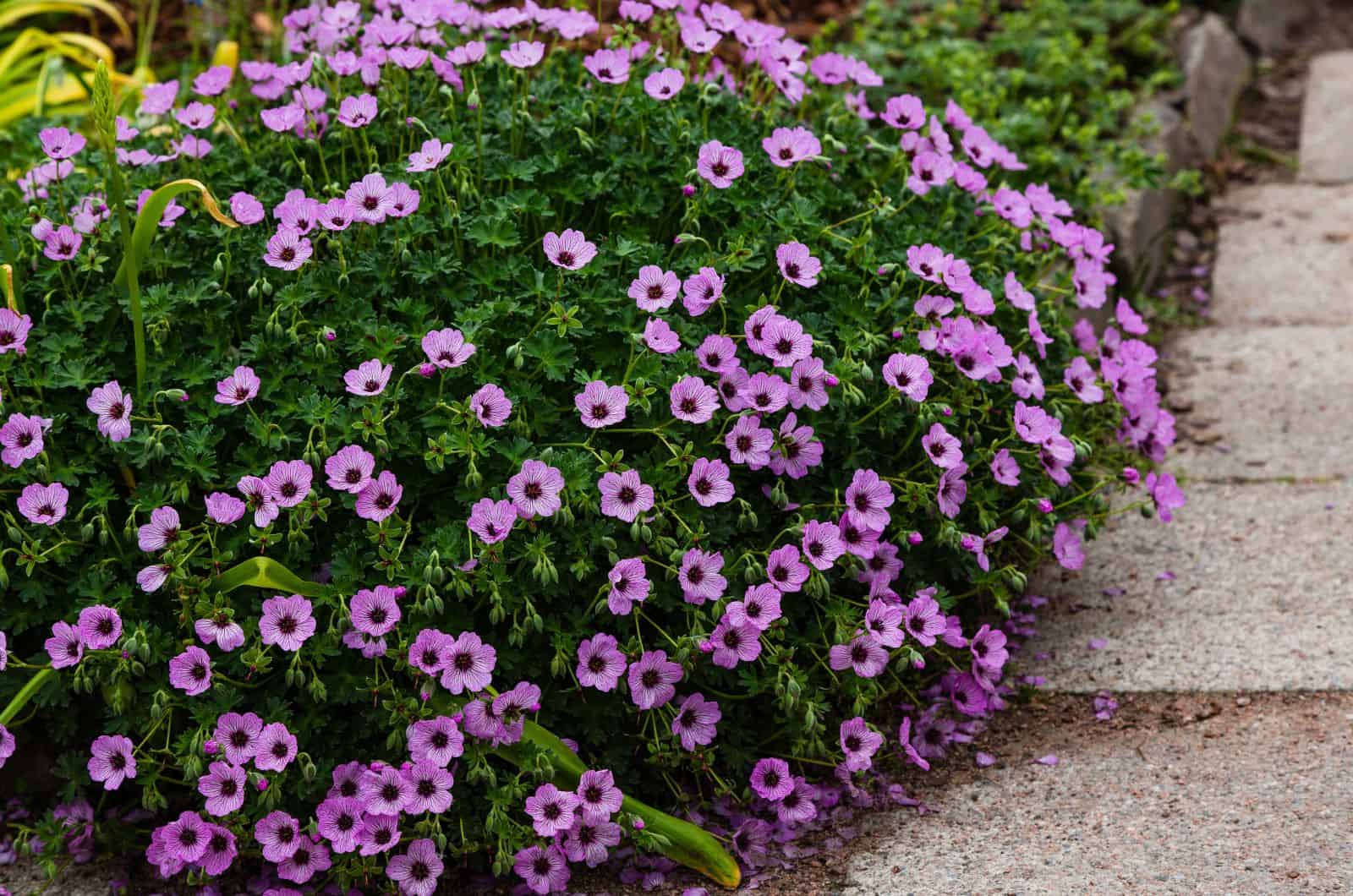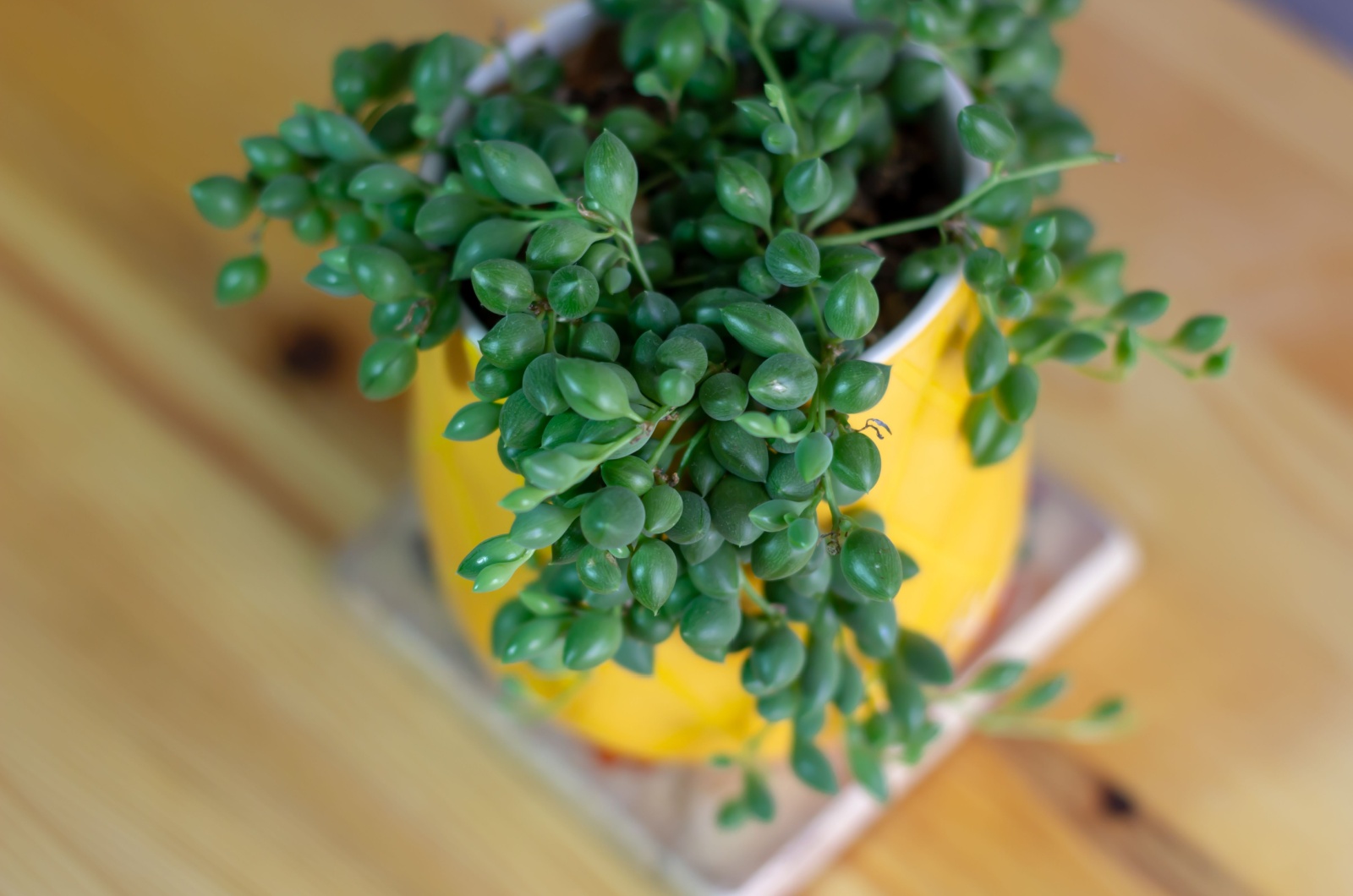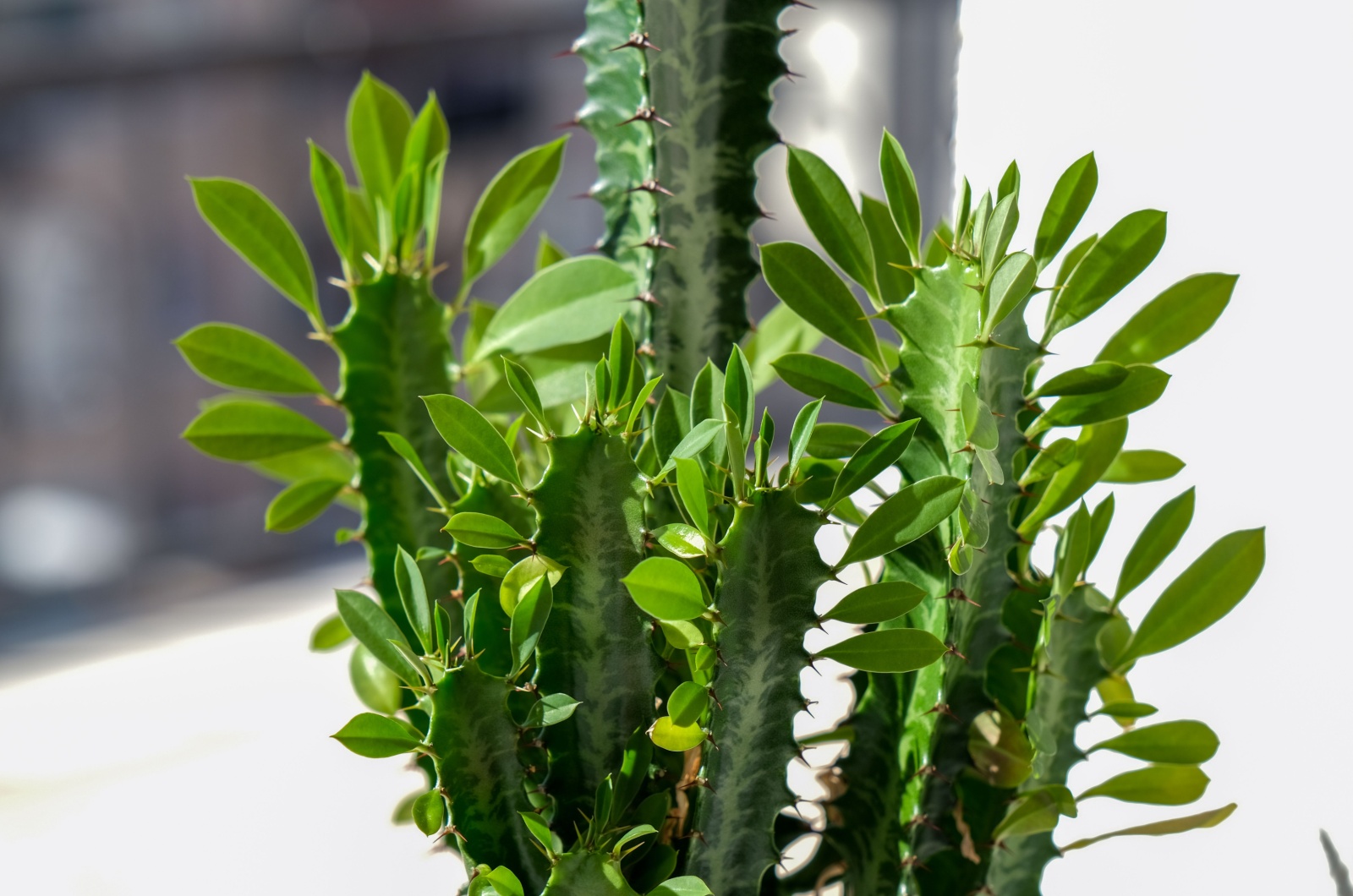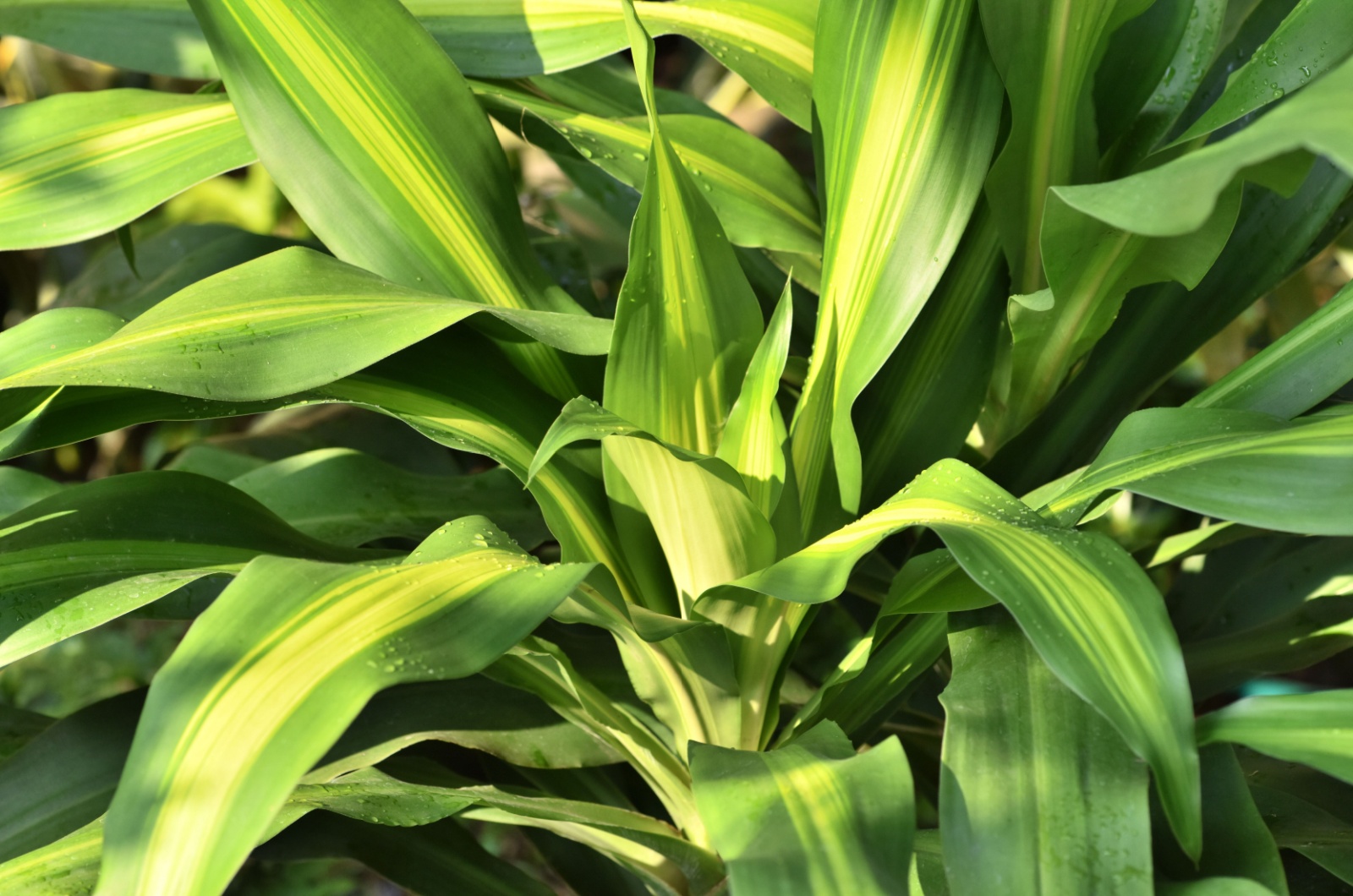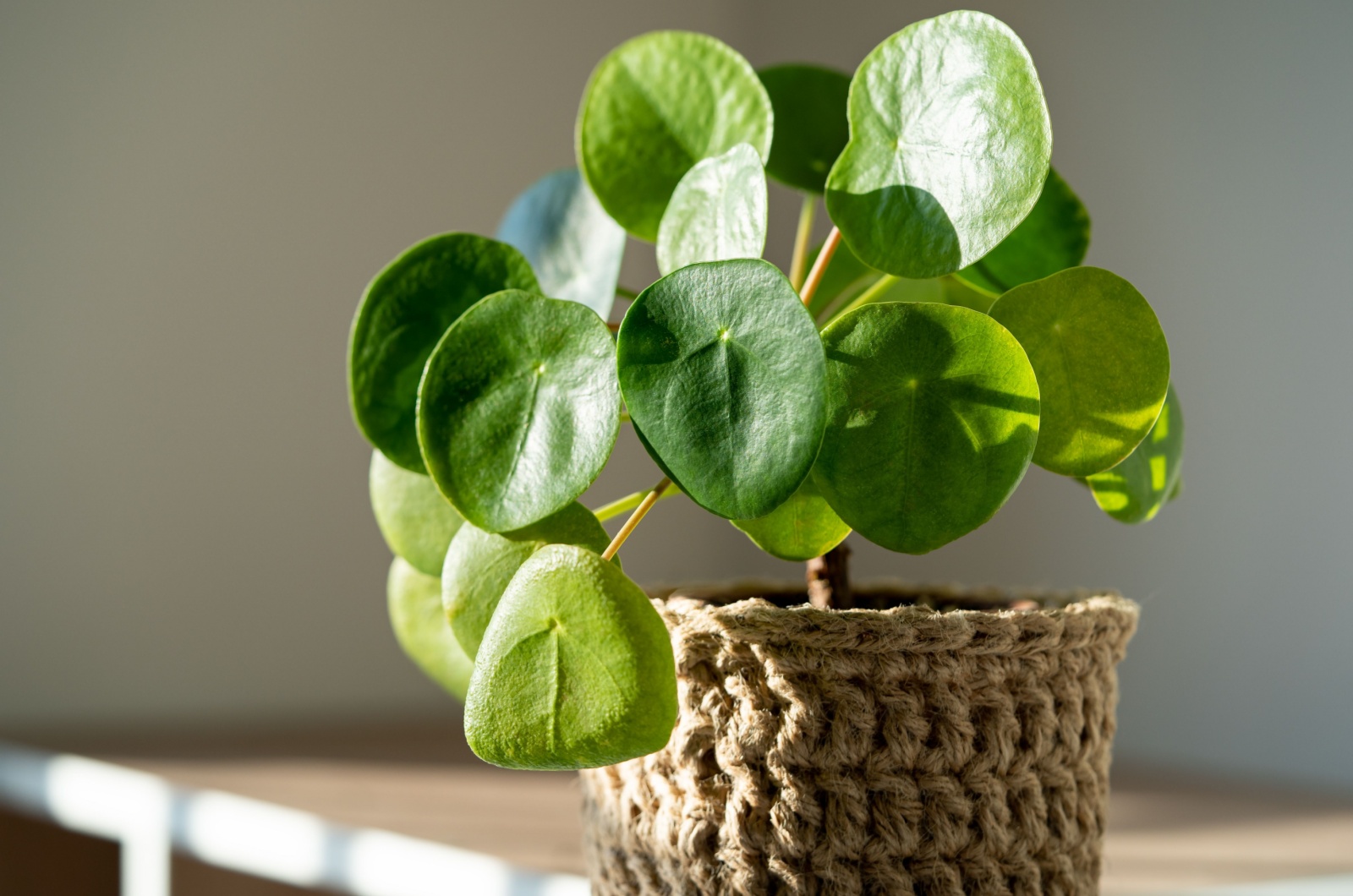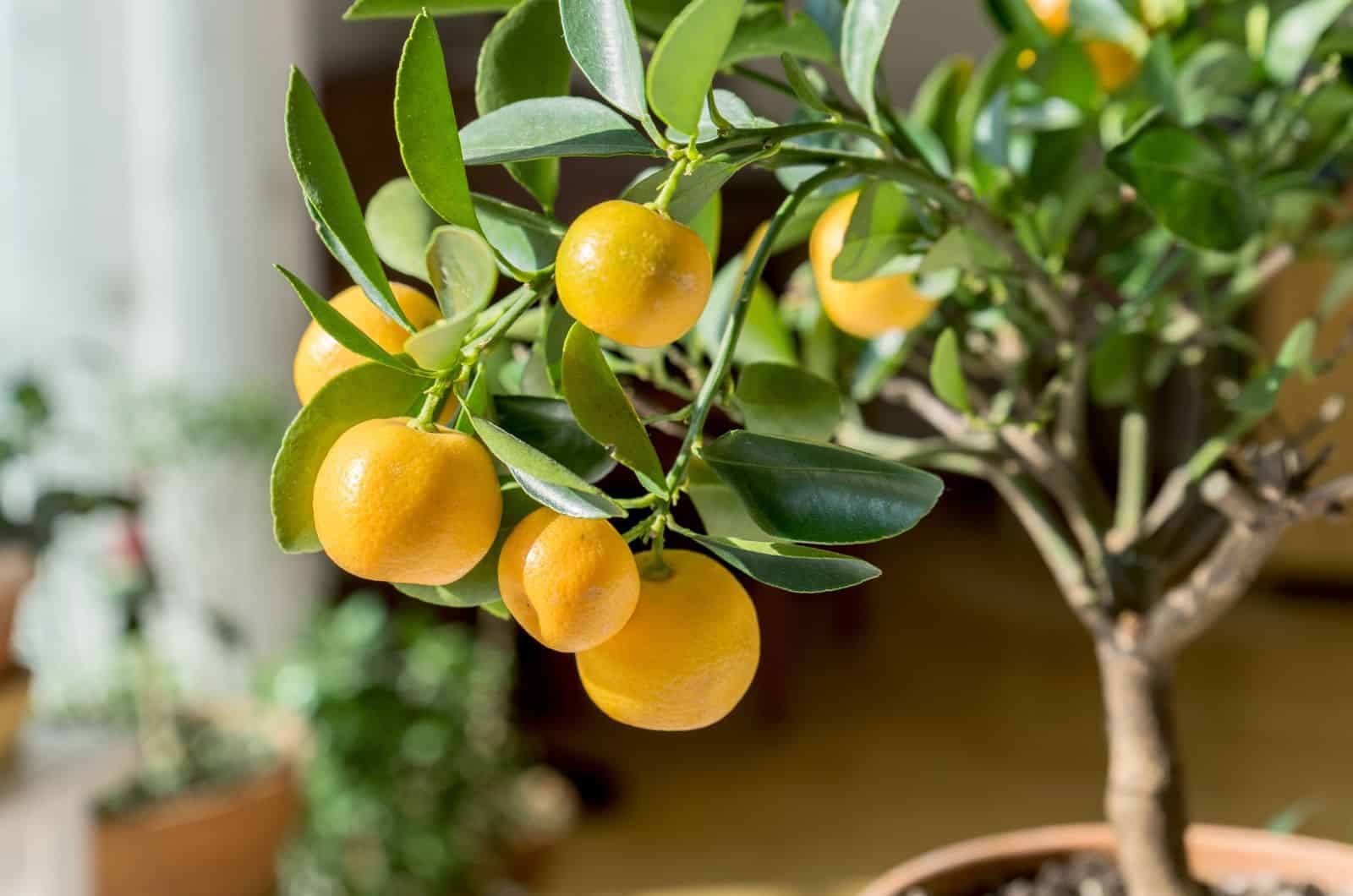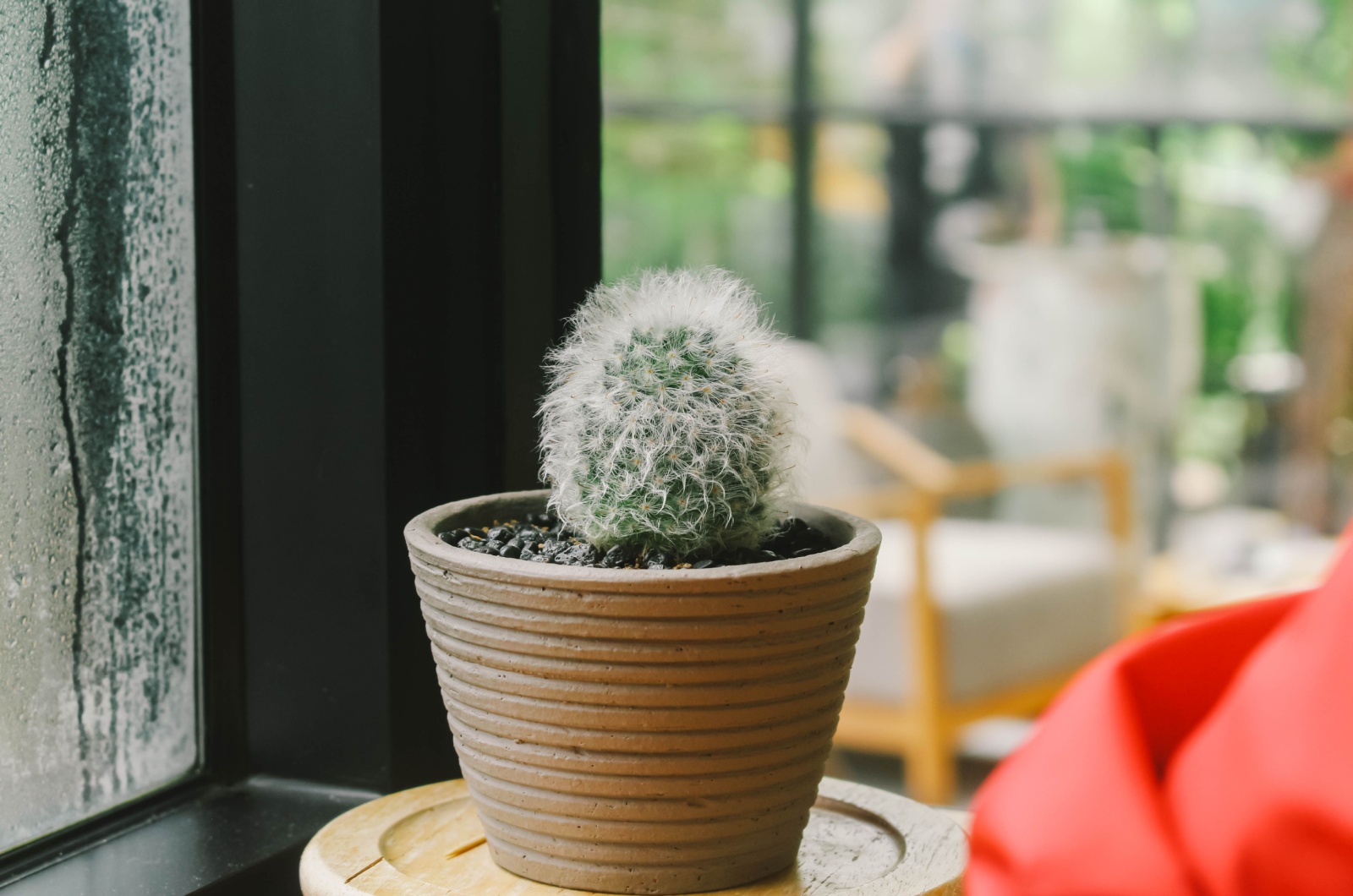Plants make every room prettier, and we mostly choose them due to their appearance. A certain plant may look good in the spot you’ve chosen, but it will only grow well if you meet its requirements.
Windows are the best light source for plants, so placing your plants near windows is an excellent idea.
However, sun exposure plays a significant role in plant development, so you must choose the plant’s spot according to its light requirements.
A sunny south-facing window may seem like a great spot, but not all plants like this type of exposure.
To help make sure you choose the right place for the right plant, I prepared a list of south-facing window plants that will thrive when given a lot of light.
There are many wonderful plant species on my list, so you can choose one based on your shape, size, and color preferences.
Let’s get started!
1. Ponytail Palm (Beaucarnea Recurvata)
If you love palm trees but are having trouble finding the right one, I have the perfect palm-like plant for you; the ponytail palm!
As you can see, it’s not really a palm or a tree. It belongs to a separate family and, consequently, a different genus.
Let’s see some basic info about the ponytail palm plant:
[table id=518 /]
This may come as a surprise, but this plant is actually a succulent. It features elongated leaves and a trunk that can hold water for some time.
This is one of the best indoor plants because it tolerates different light levels. It thrives in bright indirect light, but southern exposure or even low light won’t inhibit the growth or cause issues.
If you decide on a south-facing window, move your ponytail palm slightly away from the window to avoid sunburn.
The ponytail palm plant thrives in semi-dry environments. When cultivating this plant indoors, you should allow the soil to dry out significantly between waterings.
2. Aloe Vera
Aloe vera is a well-known succulent that has adorned households for centuries. What makes it so popular is its medicinal properties, which is why it’s also known as the “medicinal plant”.
Let’s start with some basic info about the Aloe vera plant:
[table id=519 /]
When I got my first Aloe (a long time ago), I asked my friend how to care for it. The answer was, surprisingly, very short: just give the plant a lot of bright light and be careful not to overwater it.
Your Aloe plant will grow perfectly if you place it near a south-facing window.
It requires well-draining soil and water when the soil is entirely dry. Otherwise, you’ll end up with an overwatered Aloe plant, which can be lethal.
But don’t leave it without water for long either; it doesn’t need much but can’t survive without any at all.
3. Jade Plant (Crassula Ovata)
Jade plants are one of the best plants to grow both indoors and outdoors. The Jade plant has many benefits, and it’s really, really hard to kill.
Here’s some basic info about the magnificent jade plant:
[table id=520 /]
Crassula ovata plants hate low-light conditions and will protest by displaying leggy growth. Therefore, never put one in a north-facing window.
It enjoys full sun, and you should only consider moving it from windowsills in the afternoon during hot summers in order to avoid intense sun rays.
This is also a succulent plant, so it doesn’t require much water. The easiest way to kill a jade plant is by giving it too much water.
4. Croton (Codiaeum variegatum)
Many croton species have vibrant variegations, making them ideal for every home.
Let’s start with some basic info about the croton plant:
[table id=524 /]
Crotons are excellent plants to grow indoors. There’s only one thing you should pay attention to, which is the temperature.
These shrubs can’t withstand cold and will start losing their leaves if the temperature drops below 60 degrees Fahrenheit.
Crotons won’t mind if they receive some direct light. Moreover, they’ll produce even more colorful leaves if given a lot of light.
One of my favorite species from the Codiaeum genus is the magnificent croton petra.
5. Jasmine
If you want a fragrant flower with a unique shape, then jasmine is the right plant for you. The most popular variety is the common jasmine. Still, you can find many other species, such as the star jasmine, which is one of the best star-shaped flower varieties.
Let’s first see some basic info about the jasmine plant:
[table id=521 /]
Jasmine is one of the most important flowers in China due to its stunning appearance, fragrance, and symbolism.
Jasmine grows perfectly in both direct sun and partial shade. If you put it near a south-facing window it will produce recognizable white flowers.
I recommend growing your jasmine in a hanging basket near a sunny window, as it accentuates its beauty.
6. Hibiscus
Hibiscus is commonly grown outdoors in warm climates, but surprisingly it is also a remarkable indoor plant.
Hibiscus and hummingbirds get along well, so this plant is not only pretty but also beneficial!
[table id=522 /]
Hibiscus plants thrive in sunny environments. High light levels are frequently preferable in northern climates. Still, indirect sunlight is preferable in the south due to the dry heat.
Light plays a major role in healthy hibiscus growth; if it doesn’t receive enough light it will produce fewer flowers or won’t produce any at all.
These are fast-growing plants, so if you ensure all the necessary conditions, you’ll soon enjoy their true beauty.
Hibiscus plants play a significant role in many cultures. For example, the yellow hibiscus is actually the symbol of Hawaii.
Unfortunately, you’ll rarely find the Hawaiian hibiscus because it’s an endangered species.
7. Bird Of Paradise (Strelitzia Reginae)
The bird of paradise is undoubtedly one of the plants with the most interesting names. Many confuse it with the banana plant, but it’s a separate species.
Let’s first see some basic info about the bird of paradise plant:
[table id=523 /]
Why bird of paradise? If you take a look at the flowers, you’ll notice that they feature blue petals and orange sepals that make the flower look very similar to the exotic bird.
This plant is also a low-light indoor tree, as it tolerates lower light levels. It thrives in bright indirect sunlight, making it suitable for east- and west-facing windows.
The bird of paradise will also grow well if you place it near a south-facing window. Therefore, it’s truly one of the best houseplants you’ll find.
This unique plant is also the official flower of Los Angeles.
8. Areca Palm (Dypsis Lutescens)
If you can’t decide between the areca palm and parlor palm, the light requirements of these plants can help you choose.
If a south-facing window is your only option, then the areca palm is a better choice.
Let’s start with some basic info about this Dypsis plant:
[table id=525 /]
Areca palms have silky, occasionally golden trunks that look like bunches of bamboo. Their fronds resemble bamboo leaves because they are full and thin.
They are commonly utilized as a privacy screen when cultivated outside.
These plants need a lot of bright light, so many growers avoid cultivating them indoors, as ensuring they get enough light can be challenging.
If you have an empty spot near a south-facing window, the areca palm will perfectly fit and get enough bright light to grow healthy and thrive.
9. Fiddle Leaf Fig (Ficus Lyrata)
The fiddle leaf fig, or FLF, is a well-known indoor tree with exceptionally big, deeply veined, shiny leaves that grow erect on a smooth trunk.
It’s easy to maintain and grows quite quickly, making it a perfect houseplant for impatient beginner growers.
Let’s start with some basic info about the fiddle leaf fig plant:
[table id=526 /]
The banjo fig, aka FLF, is one of the most popular houseplants and thrives best in an east-facing window.
The leaves of the fiddle leaf fig may curl if it receives too much or not enough light.
If a spot near an east-facing window isn’t available, you can place it near a south-facing window, just make sure sun rays don’t touch the leaves.
You can put sheer curtains on the windows to protect your fiddle leaf fig from too much sun.
These plants have pretty large leaves, which is the reason why you’ll often see a lot of dust on them.
Pests also adore fiddle leaf fig leaves, so you need to clean the foliage regularly to prevent it from browning or yellowing.
10. Geranium Cinereum
Many beginner growers think that the cultivation of geraniums is reserved for outdoor gardening only. Well, geraniums can be successfully grown indoors with proper care.
You’ll get an abundance of breathtaking flowers that will brighten up your household. Geranium flowers come in various colors, so you can choose which to add.
If you want a flower that represents strength, a white geranium is the perfect plant for you.
Let’s start with some basic info:
[table id=527 /]
These plants are considered hardy, so you don’t need to worry that you’ll kill them if you don’t follow the care guide strictly.
This is an excellent plant for a south-facing window because it needs a lot of sun to thrive. If you decide to grow geraniums indoors and place them in a south-facing window, pay attention to the watering schedule.
Remember, these plants require moist soil, and direct sunlight enhances evaporation, but their roots can’t survive if you keep them in soggy soil.
Therefore, you should inspect your geranium regularly, and the type of soil can help you with water retention and drainage.
Choose well-draining soil for your geranium to prevent water accumulation.
11. String Of Pearls (Curio Rowleyanus)
Another famous succulent you can add to your plant collection is the string of pearls. It’s known for its fascinating pearl-shaped leaves. Although many prefer to say pea-shaped leaves, I believe pearl-shaped fits it better.
If you have an empty corner next to your window and want to grow a vining plant, then the string of pearls is the one for you.
Let’s start with some basic info about this Curio plant:
[table id=528 /]
These plants are grown year-round as vining plants, but they actually grow as ground covers in their natural environment.
The string of pearls will also produce tiny white flowers if provided with the right plant care.
This plant doesn’t have any special requirements for its surroundings. It will grow vigorously if given enough light and food.
There are no severe health issues with a string of pearls, and it doesn’t need much maintenance. You can place it near a south-facing window and keep it in a hanging basket to accentuate its beauty.
12. African Milk Tree (Euphorbia Trigona)
When I first saw the African milk tree, I thought it was a cactus. It has a lot of nicknames that include the word cactus, but it’s actually a succulent plant (not every succulent is a cactus).
Although growers prefer to cultivate the African milk tree in the form of a hedge outdoors, you can grow it as a houseplant.
Let’s start with some basic info about the African milk tree plant:
[table id=529 /]
This Euphorbia plant features ridges with thorns and leaves that resemble teardrops. The African milk tree will stay lush and green throughout the growing season, and once new growth occurs it will be bright green.
It’s a drought-tolerant plant like most of its relatives, making it perfect for beginner growers.
If you’ve grown cacti before, you’ll know they thrive in full sun. The African milk tree has the same light requirements as cacti plants.
Place it near a south-facing window to promote healthy growth. Pay attention to intense sun rays as they can damage the leaves of your cathedral cactus plant. Remember that the watering needs of your African milk tree change when temperatures are high and light is too direct.
It is a drought-resistant plant, but it can’t live without water completely. If you have toddlers or pets, be careful where you place this Euphorbia because it contains a sap that is poisonous to humans and pets and can cause severe health issues.
13. Dracaena fragrans (Corn plant)
The Dracaena fragrans has a weird nickname – the corn plant. It has nothing to do with corn, as it comes from a different plant family.
Let’s start with some basic info about the Dracaena fragrans plant:
[table id=530 /]
Although it has a growth habit like corn, the Dracaena fragrans is more a plant that resembles a spider plant.
These are slow-growing plants that produce thick stems and slender leaves. This plant thrives in partial shade, but you can place your Dracaena near a south-facing window and protect it from sun rays by putting up sheer curtains.
The only thing to pay attention to when it comes to light is to avoid placing your Draceana in low light.
These aren’t low-light plants and could lose variegations and display stunted growth if not given enough light.
14. Money Tree (Pachira Aquatica)
The money tree, aka Pachira aquatica, is one of the most famous plants. They are tall but don’t worry; they won’t reach 60 feet like they do in their natural habitat!
Eight feet is their max indoors; if that’s too much for you, just grow it as bonsai. The plant will attract wealth to your household if you put it in the right place.
But you need to give it the proper care if you want it to thrive.
Let’s start with some basic info about the well-known Pachira aquatica:
[table id=531 /]
One of the most spectacular things you’ll ever see is a braided money tree. There are many ways to grow it, and the best thing of all is that the plant is easy to maintain!
The Malabar chestnut requires a lot of sun. However, you should filter the sunlight to prevent leaf scorching and yellowing.
Therefore, choose a spot near a sunny window (south-facing) and use sheer curtains for filtering.
These plants love water, but you should be careful not to overwater them. You’ll end up with a money tree with root rot, and unfortunately, this disease can have fatal consequences.
15. Citrus Trees
Citrus trees look magnificent, and gardeners in warmer climates enjoy growing citrus trees outdoors.
Well, the good news is that you can also grow these trees indoors. Of course, you need to pay attention to cultivars because you need dwarf varieties for indoor cultivation.
Let’s start with some basic info about citrus trees:
[table id=532 /]
Kumquat, Ponderosa lemons, tangerine, and Tahitian orange will make amazing houseplants as they are dwarf varieties of citrus trees.
It may be pretty hard for these trees to produce fruits indoors, but it’s not impossible.
A south-facing window is your best friend now. Citrus trees enjoy full sun and warmer temperatures.
You also need to feed them and aid pollination if you want fruit. As for watering, allow the top inch of the soil to dry out before watering your citrus tree thoroughly.
16. Powder Puff Cactus (Mammillaria Bocasana)
The last plant on our list is the cute and cheery powder puff cactus! As you can conclude from its nickname, it’s a cactus. This is actually the most popular variety from the Cactaceae family.
It does look cute, but you probably shouldn’t touch it because the spikes are really, really sharp!
Let’s start with some basic info about the powder puff cactus!
[table id=533 /]
The powder puff pincushion is a fast grower, and its body is typically green or blue with white hairs all over it.
White or red flowers will appear in summer and beautifully adorn the windowsill on a south-facing window.
As you can guess, this plant enjoys full sun, and that’s the only way to keep it healthy and happy.
Interestingly, you can find tiny offsets around the base of the parent plant that you can use for propagation to get as many powder puff cacti as you want.
Wrapping Up
When growing plants indoors, there are so many ‘rules’ to follow regarding watering, fertilizing, soil, humidity, and light… the list seems endless.
If you live in the Northern Hemisphere, one of the trickiest things is to find south-facing window plants, as many indoor plants are fussy about sun exposure.
Now that you have our list you can choose the best plant for you and enjoy!
Until next time!
Like this post? Share or pin it for later!



